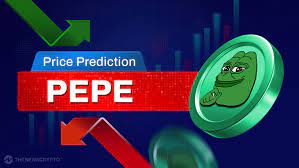Wash Trading by Token Issuers Continues to Plague Crypto Markets: Kaiko Report
Release: 2024/10/18 16:54 Reading: 687

Wash Trading in Cryptocurrency Markets: A Persistent Problem
Wash trading, a practice that artificially inflates token prices and trading volumes, remains prevalent in cryptocurrency markets, according to a recent report by Kaiko. The report highlights its presence on both decentralized exchanges (DEXes) and centralized exchanges (CEXes), where token issuers manipulate liquidity pools to deceive unsuspecting investors. This activity distorts market data and undermines the integrity of crypto markets, posing risks to retail and institutional investors.
Wash Trading on DEXes: A Growing Concern
Liquidity Pool Manipulation on Uniswap
Kaiko's report indicates that many of the over 200,000 assets on Ethereum-based DEXes lack intrinsic value and are often controlled by single entities. One common wash trading method involves creating ephemeral liquidity pools on platforms like Uniswap. Token issuers establish liquidity pools, injecting and withdrawing tokens to simulate high demand. They then engage in wash trading, buying and selling tokens among their own accounts, artificially inflating prices and volumes. This tactic attracts external investors who perceive a genuine demand for the token.
Undermining Trust in Decentralized Markets
The prevalence of wash trading on DEXes like Uniswap raises concerns about transparency and integrity. While DEXes are often perceived as more secure and transparent than CEXes due to their decentralized nature, inadequate oversight has enabled unscrupulous actors to exploit these platforms. Retail investors are particularly vulnerable, as wash trading creates false signals of demand and liquidity, leading them to invest in tokens with little to no inherent value.
Suspicious Activity on Centralized Exchanges (CEXes)
High Volume-to-Liquidity Ratios on CEXes
Wash trading is not confined to DEXes. Kaiko's report identifies suspicious activities on CEXes like HTX and Poloniex. These platforms exhibit a high number of assets with volume-to-liquidity ratios exceeding 100 times, a red flag for market manipulation. By artificially inflating trading volume, bad actors create an illusion of liquidity and drive up prices.
Unusual Trading Patterns for PEPE Token on HTX
One notable example is the PEPE token on HTX. In July 2024, trading volumes for PEPE surged on HTX, contrary to trends on other exchanges. This anomaly suggests wash trading or market manipulation, as the volume spike was unsupported by broader interest. Such discrepancies undermine the reliability of trading volume data on some CEXes and emphasize the need for enhanced transparency and investor protection.
Impact of Wash Trading on Crypto Markets
Distorting Market Data
Wash trading distorts market data, making it difficult for investors to accurately gauge token demand and value. By artificially inflating volumes and prices, it creates the illusion of liquidity and interest, leading to misinformed decisions.
Undermining Investor Confidence
Wash trading also erodes investor confidence in the broader cryptocurrency market. Investors rely on accurate market data for decision-making, and the prevalence of wash trading undermines the integrity of exchange-provided data. For DEXes, where transparency is touted as a core advantage, wash trading raises questions about the effectiveness of current detection and prevention mechanisms.
Addressing the Issue: Regulatory and Industry Response
Regulatory Oversight
Combating wash trading requires regulatory oversight. Centralized exchanges face varying levels of regulation, but DEXes often operate with minimal supervision, making them susceptible to manipulation. Regulators are taking steps to address wash trading, but the decentralized and global nature of the crypto market poses enforcement challenges. Coordinated efforts between regulators and industry players are essential for developing effective solutions.
Technological Solutions
The industry is exploring technological solutions to combat wash trading. Blockchain analytics firms like Kaiko identify suspicious activity and provide data to exchanges and regulators for detection and prevention. Exchanges can implement automated monitoring systems to flag unusual trading patterns and take action against manipulative accounts.
Conclusion
Wash trading remains a significant problem in cryptocurrency markets, with token issuers on DEXes and CEXes manipulating liquidity pools to artificially inflate prices. This distorts market data, undermines investor confidence, and poses risks to both retail and institutional investors. Addressing wash trading requires a combination of regulatory oversight, technological innovation, and industry collaboration. By enhancing transparency and accountability, the crypto industry can create a more trustworthy and reliable market for all participants.
Recent news
More>- Homosexual Pepe Solana Memecoin to Rally 18,000% Before Exchange Listing, While SHIB, BONK and DOGE Crash 01-01
- BTFD Presale Captivates Investors in the Best New Meme Coin Presales for Significant Returns as PEPE and SPX6900 Dominate the Scene Fuel the... 01-01
- Homosexual Pepe (HOMOPEPE) Solana Memecoin to Rally 18,000% Before Exchange Listing, While SHIB, BONK and DOGE Crash 01-01
- The Metrics Pointing to Massive Potential for WIF, JASMY, and PEPE in 2025 01-01
- BTFD Coin’s Presale is Unmissable Amid Pepe and Moo Deng’s Crypto Hype: Best Meme Coin Presales to Join This Week 01-01
- Homosexual Pepe (HOMOPEPE) Solana Memecoin to Rally 18,000% Ahead of Exchange Listing, While SHIB, BONK and DOGE Crash 01-01
- Crypto Gems for the Next Quarter: Top 5 Tokens to Watch 01-01
- Why $PEPE Jumped 20% Today And Which Coin Could Be Next 01-01
- Best New Meme Coins to Join for Short Term: BTFD Raises $4.7M in Presale as BONK Boasts Low-Cost Transactions and PEPE Enjoys Steady Followi... 01-01
Selected Topics
More>>-

- pepecoin Price Analysis
- This topic provides articles related to PepeCoin price, covering key PepeCoin insights and analysis
-

- pepe:meme star
- This topic provides articles related to the most promising meme, PEPECOIN, a project with the potential to become a mainstream digital currency. It has the advantages of decentralization, reliability, ease of use, fast speed, low cost and scalability, and is expected to be more widely used in the future
-

- pepecoin price prediction
- We’ve gathered facts about pepecoin’s success story and provided a pepecoin price prediction
Selected Articles
More>>- 1 Avalanche and Aptos rival raises over $600k in 2 weeks
- 2 Crypto Prices Today: Market Continues Rally With BTC, Pepe Coin, SEI Rising
- 3 Major Analyst Crypto Tony Bullish on These Meme Coins, But One Stands Out
- 4 MTAUR Ready to Crush DOGE and PEPE: 100x Price Growth Incoming?
- 5 Memecoins Surge in 2024, Popcat Leads with 7,621% YTD Gain, Outshining Top Crypto Tokens
- 6 PEPE Meme Coin Smashes ATH – See How Much an $83 Investment in Pepe Coin Last Year is Worth Now
- 7 Missed Pepe Unchained? Don’t Worry, This New Pepe-Themed Meme Coin Will Produce Bigger Gains in 2025
- 8 Top 4 Altcoins At 70% Discounts – Last Chance!
- 9 Smart $Pepe trader makes $11.7M profit during Market Drop
- 10 Dogecoin Creator Proposes DOGE to NBA Legend Scottie Pippen
ABOUT US
We are building the most influential,trusted information platform for aglobal community engaged in thd transformation of the financial system andthe emerging crypto economy.PEPE is an integrated platform for media,events,data & indices for the next generation fo investing and the future of money.
Get in touch with the PEPE team at admin@pepecoinbuy.com
